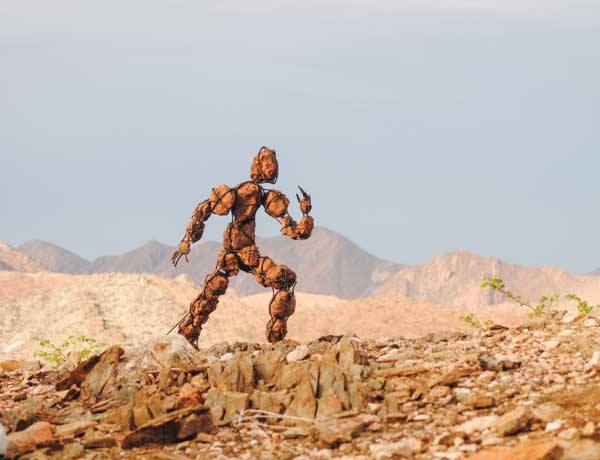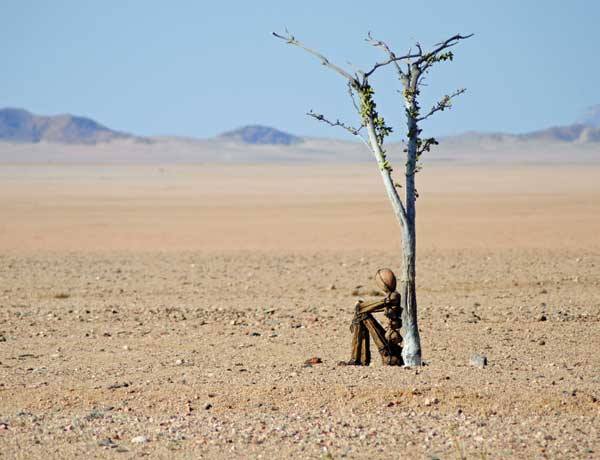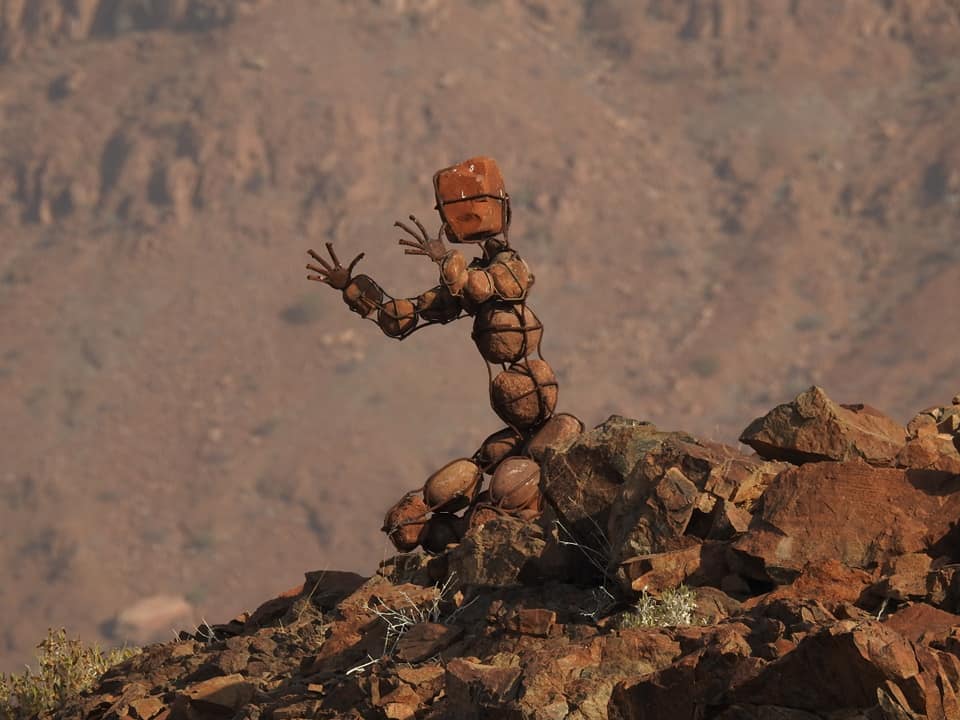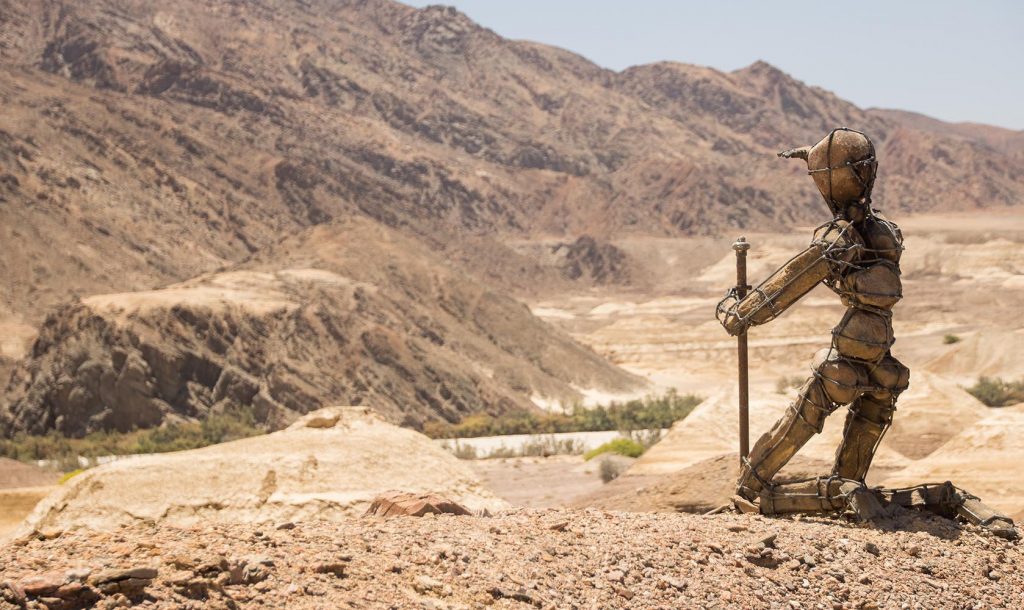The Artworks
Since 2014, a series of sculptures made of desert stones and iron rods had been appearing across one of the most remote and uncontaminated corners of the planet: the north-western area of the Namib Desert.
Resembling human figures, these sculptures have been dubbed “The Lone Stone Men of the Desert”.
Could they represent different cultures set out on a quest for an encounter? Or, perhaps, people petrified by the beauty of untainted nature?
he complex formed by the statues and their surrounding landscape may be construed as a single, comprehensive work in the wake of Land Art, where landscape is not manipulated in a physical sense, but rather through the conceptual impact of sculpture on a natural context. Together with the endless desert horizon, the dunes, rocks, and withered trees hosting these artifacts are certainly an integral part of the work, which thus crosses the boundaries of Site-Specific Art: not a dialogue between a work and its context, but a form of indefeasible organicity of landscape and work. These sculptures are somewhat akin to Street Art; for instance, in the serendipity of their apparition and the detachment pursued by the artists who have chosen to remain hidden. Still, their galactic distance from any urban settlement marks their stark difference. An influence of Pop Art is also evident, such as in the ongoing game initiated by the Artist, who periodically move the statues around and engages viewers in a sort of treasure hunt. But this category, too, is not entirely fitting. Perhaps a new definition is called for, one which considers the elements of continuity and discontinuity with other artistic phenomena: “Desert Art”. Beyond definitions of genre, however, the distinctive features of this project make it both topical and engaged in a dialogue with a century-old tradition rooted in Immanuel Kant’s Critique of Judgment: “Art can only be called beautiful if we are conscious of it as Art while yet it looks like Nature”. Likewise, the elicitation of its creators (who prefer to remain unknown and be referred to by the pseudonym RENN) specifically highlights the need to refocus on the work of art. “Art Before Artist”: a reflection entrusted to the world’s most ancient desert for safekeeping.

2014 Making haste – Faster than rust, Desert stone, Iron bar and landscape, h. 150 cm, No. 44

2016 Green Drum – There is no hurry here, Desert stone, Iron bar and landscape, h. 90 cm, No. 21

2019 Why – I’m never alone over here, Desert stone, Iron bar and landscape, h. 90 cm, No. 45
RENN - Art before Artist
Artworks with no named author are typical of the last century. Perhaps already anticipating the imbalance towards the individual and individualism that is prevalent today, several authors of the past have decided not to sign their works or to play with the public in a conceptual and artistic kaleidoscopic game of mirrors in which the work could have made itself. Hundreds of kilometers from any urban area, in the middle of the desert, an encounter with the artworks is quick to generate an explosion of dreamlike evocations of this type: is the sculpture the artwork or the nature that surrounds it? Both? Or maybe the artwork is my interaction with these? Should I stop and ask myself what are we all doing here?
What role should the author have in this story? None.
RENN is a single artistic personality who is declined in the plural to avoid any personal connotation to leave pre-eminence to the works.
The use of the plural was borrowed from English, in particular from the current current of thought that wants to avoid gender references. However, that of RENN is an artistic use that is closest to the tradition of the pluralis maiestatis of Latin: not as a celebration of personality but vice versa as an exaltation of the centrality of the work at the expense of any personal characteristic of the author. Therefore they will be referred to in generic form as the Artist, Author, They or with the chosen pseudonym: “RENN”. RENN accept the Namibian nationality and the deep bond with the Kunene region as the only characterization. Any other demographic or cultural connotation is considered secondary by RENN and the main desire is that the attention remains on the artworks themselves: Art Before Artist is the synthesis of this choice. The work itself affirms the secondary nature of sex, age, individuality or collectivity, personal motivations or beliefs of those who created them. A perfect contemporary expression of Immanuel Kant’s definition of the artist as “the mean through which nature gives its rules to art” (Critique of Judgement, 1790).
This is the first ever exhibition of RENN’s works.

